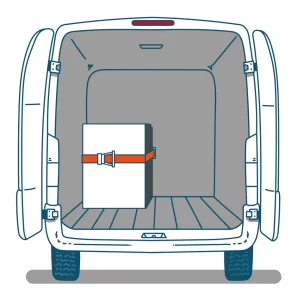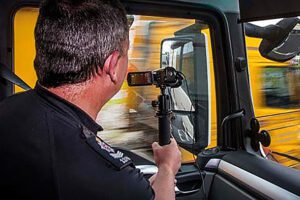Check what you know
Did you know?
- Each year, DVSA issue over 2,000 prohibitions to drivers of vehicles which present a road safety risk because of poor load security.
- Where a vehicle’s load is deemed to be in a dangerous condition, the driver can receive 3 penalty points and a licence endorsement.
- Drivers and their employers can be fined up to £5,000 per overloading offence.
The driver is responsible for the vehicle and any load while driving on the road, regardless of who loaded it.
![]()
The driver is required to ensure the load is secured to the vehicle so it cannot cause a danger to anyone.
Overloading changes the way a van handles – especially if the load is unsecure and will increase fuel consumption.
![]()
Consequences of poor load securing can result in death or serious injury, damaged reputation and prosecution.
Safe Loading
Safety moment:
Driving a van: weight limits and loading
https://www.youtube.com/watch?v=nFXZRPHvBzc
Best practice tips

- The load should be placed against the bulkhead to prevent the load sliding forward.
- Heavy items should be stacked at the bottom and lighter items at the top.
- All load restraints in use should be in good condition and appropriate for the load.
- If any part of the load moves while driving, the driver should pull in a safe place to re-secure it.
- The load should be loaded so its weight is distributed evenly across the vehicle.
- The load should be stable and secured to prevent it sliding forwards and backwards or toppling over.


Operation Tramline
Operation Tramline targets dangerously driven commercial vehicles, other high sided vehicles and private cars to improve compliance and to reduce the number of incidents caused by unsafe driver behaviour.
Top three offences detected through Operation Tramline are:
Mobile phone use
Seat belt offences
Driver not in proper control